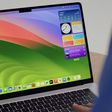Intel today introduced its new Xeon-W workstation-class processors at the IFA trade show in Berlin, and the new chips line up nicely with the processor capabilities we’re expecting to see in the iMac Pro.
The new chips, which use an LGA2066 socket and Skylake-SP architecture, come in 8, 10, and 18 core configurations with Turbo Boost up to 4.5GHz, 48 PCI Express 3.0 lanes, and support for up to 512GB of DDR4–2666 ECC memory.

Apple has said the iMac Pro will feature Intel’s Xeon processors, with 8, 10, and 18 core chips available as optional configurations with up to 42MB cache and maximum Turbo Boost up to 4.5GHz.
Specifically, Apple could be planning to use the 8-core 3.7GHz Xeon W–2145, the 10-core 3.3GHz Xeon W–2155, and the 18-core 2.3GHz Xeon W–2195. Pricing on the chips starts at $1,113, but a price is not yet listed for the high-end 18-core processors.

According to Intel, the Xeon-W chips offer a 1.87x boost in performance compared to a 4-year old workstation with an Intel Xeon E5–1680 v2 Romley processor, like the 2013 8-core Mac Pro, and up to 1.38x higher performance compared to previous-generation Xeon E5–1680 v4 chips.

Intel plans to release its high-end 18-core chips in the fourth quarter of 2017, which also lines up with the target release date of the iMac Pro. The other chips may see earlier release dates.
Though Xeon-W chips do appear to work for the iMac Pro, there is still some question as to whether they’re the chips Apple plans to use. A June report from Pike’s Universum suggested Apple would use Intel’s server-grade Purley processors with an LGA3647 socket rather than the desktop-class LGA2066 socket.
That information was based on firmware files found in the macOS High Sierra beta, but it’s possible it was inaccurate. Intel announced some Purley chips in July, but that announcement did not include chips that would be appropriate for the iMac Pro.
Along with Xeon processors, the iMac Pro will include Radeon Pro Vega graphics, up to 4TB of solid state storage space, four Thunderbolt 3 ports, up to 128GB of ECC RAM, and a redesigned thermal architecture to support those components.
Rumors based on firmware findings suggest the iMac Pro could also include a Secure Enclave with an ARM coprocessor like the MacBook Pro with Touch Bar, but it’s unclear at this time what that functionality will be used for as Apple has made no mention of Touch ID support.
The iMac Pro is positioned as a workstation class machine aimed at pro users with demanding workflows, and it’s priced accordingly. When it launches in December, pricing for the iMac Pro will start at $4,999.





















Top Rated Comments
Also, for that amount of money, they should include 2 hdmi inputs on the back of the monitor. I can't be the only one who finds it crazy redundant to buy another monitor to occasionally play a PS3, when a perfectly good screen is already in the room. Just saying...
But remember that the iMac Pro is an all-in-one... which is not the form-factor most "pros" would want anyway.
Your "rules" don't mention anything about the iMac Pro cramming a bunch of heat-generating parts inside a monitor... and that it's essentially a disposable computer. Shouldn't that count against the iMac Pro? Not unless you're handy with a heatgun to perform upgrades. :p
So even if the Hackintosh components cost more than the iMac Pro... at least you can put them in a standard PC case with adequate airflow and upgradability.
Plus with a Hackintosh you can choose the video card(s) and monitor(s) you want... and have multiple PCIe SSDs inside the computer... and other internal drives and expansion cards too. You can install anything you want. And again... you don't need to have everything crammed into an unnecessarily thin case.
Besides... the biggest reason someone builds a Hackintosh is to save money and choose the parts they want... not to spend as much as a "real" Mac with the exact same parts.
Someone can follow you your "rules" to build a Hackintosh that will be similar to the iMac Pro... but they might not get all the way. Fair point.
Then again... the iMac Pro is an all-in-one with little to no expandability. That should be taken into consideration too. :)
Providing long lasting high powered computers is no longer they're concern.
HELLO! THEY'RE MAINLY A DISPOSABLE PHONE MANUFACTURER NOW! The Mac was afterthought since Mavericks!
Will that be the Mac that becomes self-aware?;)